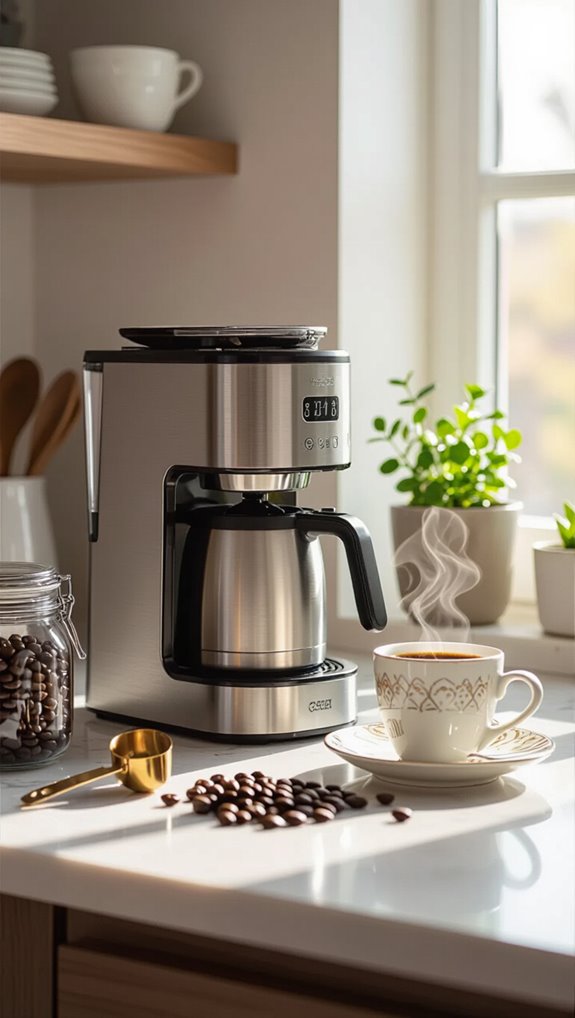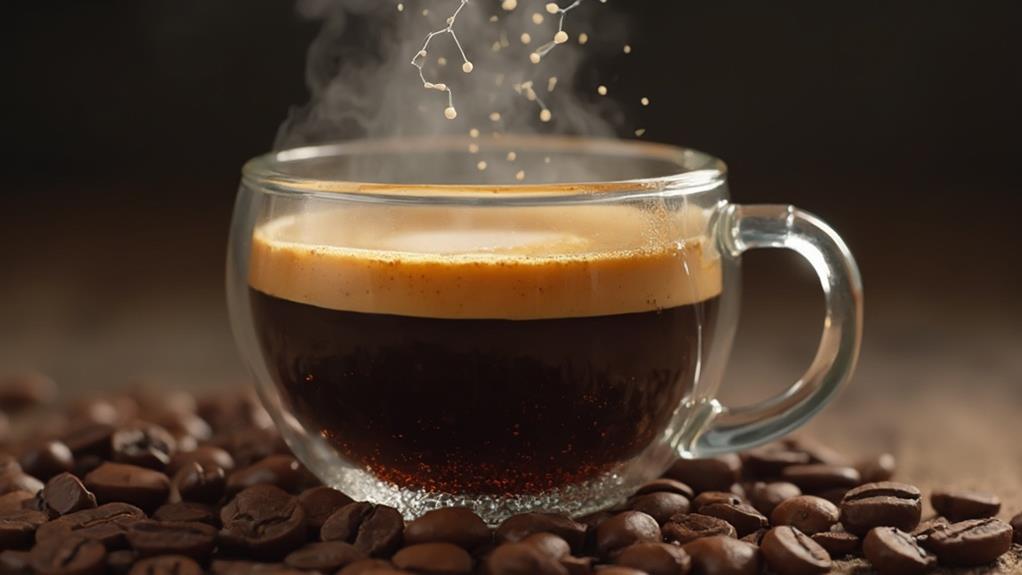Wondering how many carbs are in your daily cup of coffee? If you’re counting carbs for weight loss, diabetes management, or a keto diet, this is a crucial question to answer. The good news is that black coffee is virtually carb-free, but the additions you make can transform it into a carb-heavy drink that throws off your goals.
The reality is that most coffee lovers don’t drink their coffee plain. From lattes and cappuccinos to sweetened cold brews and flavored frappuccinos, the modern coffee menu is full of hidden carbs that can add up fast. A simple morning coffee run could cost you anywhere from zero to 60+ grams of carbs depending on what you order.
In this guide, you’ll discover exactly how many carbs are in different types of coffee drinks, which ingredients spike your carb count the most, and practical low-carb alternatives that let you enjoy delicious coffee without the guilt. Whether you’re a black coffee purist or someone who loves a creamy, sweet brew, you’ll find strategies to keep your coffee habit aligned with your health goals.
Table of Contents
How Many Carbs Are in Black Coffee

Black coffee is essentially a carb-free beverage, containing less than 1 gram of carbohydrates in a typical serving.
Whether you’re enjoying a plain black coffee, brewed coffee, or an espresso shot, you’re consuming virtually no carbs that’ll impact your diet. An 8-ounce cup typically offers under 1 gram of carbohydrates, making it perfect for keto enthusiasts.
Unsweetened cold brew and traditional brewing methods like French press also provide negligible carbs.
The key is avoiding added sugar or sweeteners. Your black coffee remains a clean, low-carb drink that won’t disrupt your nutritional goals.
Does Coffee Have Carbs or Is It Zero

Are you wondering whether coffee contains carbs or is essentially a zero-carb beverage? Black coffee is virtually zero carbs, with most brewed coffee containing less than 1 gram per cup. An espresso shot has about 0.5 grams of carbs, while cold brew might range from 2–4 grams.
The key is avoiding added sugars, milk, and cream, which can spike carbohydrate content. Opt for low-carb coffee options like unsweetened black coffee or use unsweetened almond milk to keep it keto-friendly. Your plain, pure coffee is naturally a zero-carb drink that fits perfectly into low-carb eating plans.
What Adds Carbohydrates to Your Daily Coffee
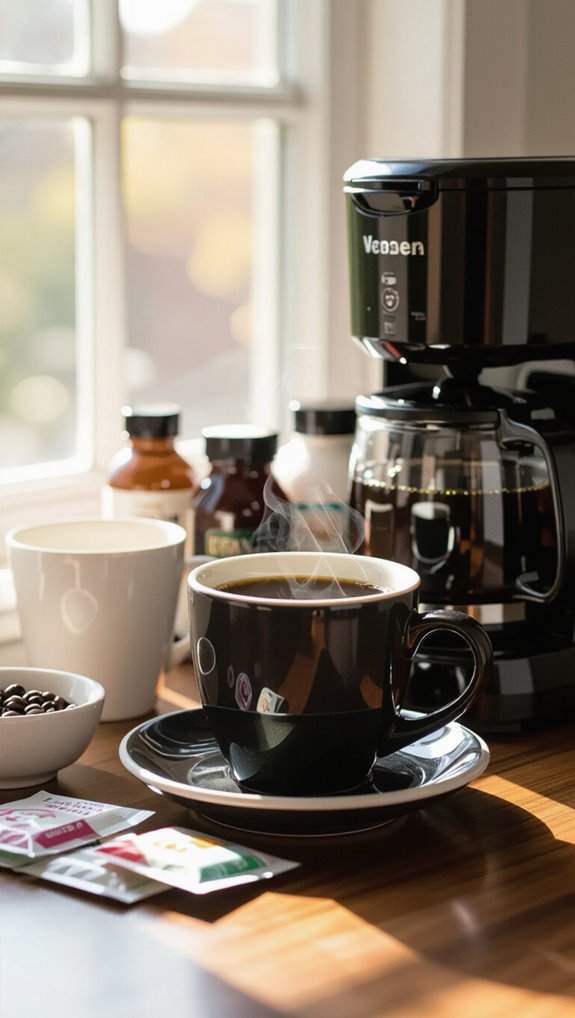
When you doctor up your daily coffee with various add-ins, you’ll quickly rack up unexpected carbohydrates that can sabotage low-carb or ketogenic diet goals. Black coffee is naturally carb-free, but milk, syrups, and sweeteners transform your drink into a carb-loaded beverage.
| Add-In | Carb Count |
|---|---|
| Sugar | 4-5g per tsp |
| Oat Milk | 16g per cup |
| Flavored Syrup | 4-5g per pump |
Low-carb alternatives like unsweetened almond milk or heavy cream can help manage your carb intake. Whipped cream and flavored creamers often hide significant carbohydrates, so always check labels to maintain your dietary goals.
Carbs in Popular Coffee Drinks You Order Daily
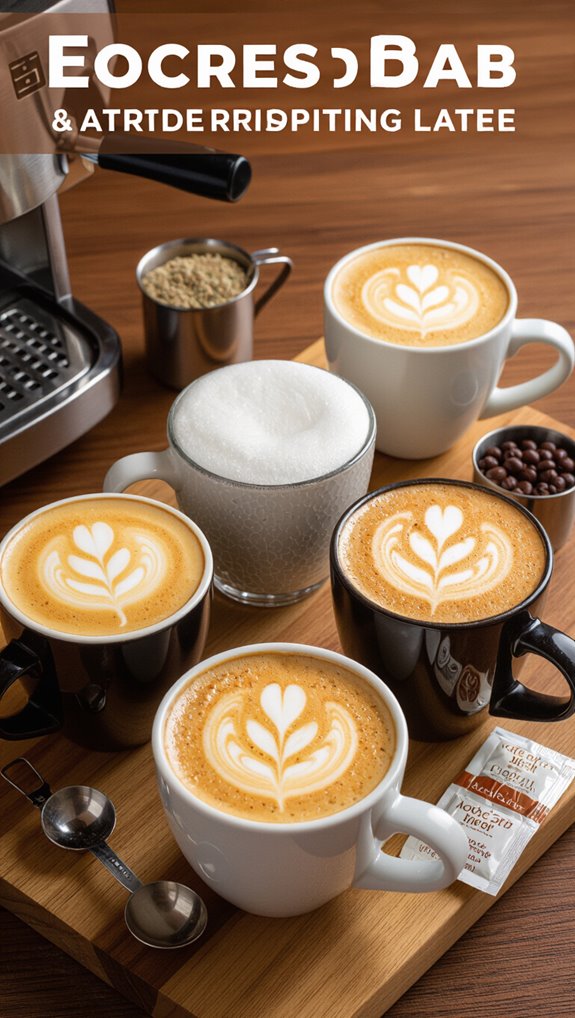
Navigating the carb landscape of your favorite coffee shop drinks can feel like tiptoeing through a nutritional minefield.
Black coffee and espresso remain your lowest-carb friends, with less than 1 gram of carbs per serving. Cold brew sneaks in slightly higher at 2-4 grams, while popular drinks like lattes and mochas pack a carb punch.
A 16-oz Starbucks latte hits around 14 grams, but a mocha can spike to 43 grams from chocolate syrup.
Combat hidden carbs by requesting unsweetened almond milk, heavy cream, or sugar-free syrups.
Your smart swap? Choose americanos or black iced coffee to keep those grams low.
How Many Carbs in a Latte and Cappuccino
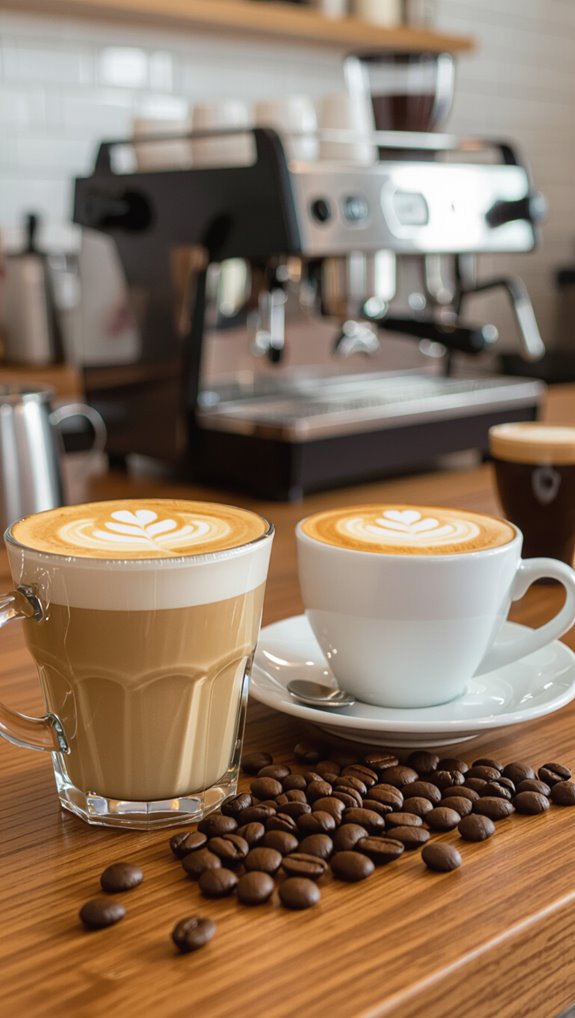
Every coffee lover wondering about the carb content of their favorite milk-based espresso drinks will find comfort in knowing that lattes and cappuccinos typically range between 12-14 grams of carbs in a 16-oz serving.
The latte carbs come primarily from 2% milk’s lactose, while cappuccinos have slightly fewer carbs due to more foam and less steamed milk.
Switching to unsweetened almond milk can dramatically reduce carbs from 14 g to just 1-2 g.
Watch out for flavored syrups and toppings—they can quickly escalate carbs from 5 to 40+ grams, transforming your low-carb beverage into a carb-heavy indulgence.
Are Sugar-Free Coffee Syrups Really Low Carb Options
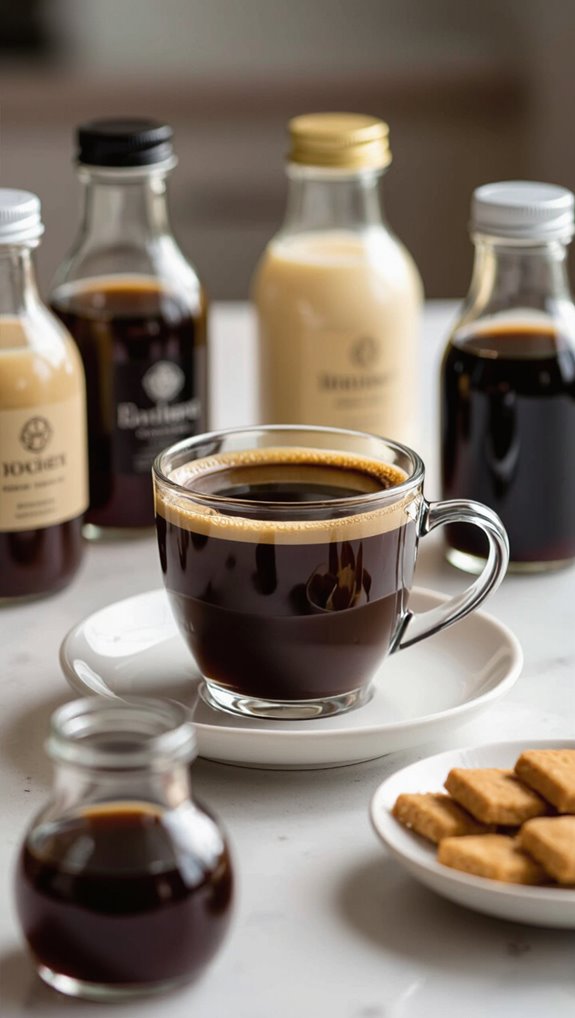
Coffee lovers seeking low-carb alternatives often turn to sugar-free coffee syrups, hoping to slash carb intake without sacrificing flavor. Most contain non-nutritive sweeteners like stevia or sucralose, making them effectively zero-carb per pump. But beware: some syrups sneak in polyols like erythritol or maltodextrin, adding hidden carbs.
Always check labels carefully. Sugar-free pumps at coffee shops are typically zero-carb, but flavored bases can still pack surprise carbohydrates. The real carb culprit? Dairy milk. A sugar-free vanilla low-carb latte can range from 10–40g carbs depending on your milk choice, so choose wisely to keep your drink keto-friendly.
Does Adding Milk Change the Carb Count Dramatically
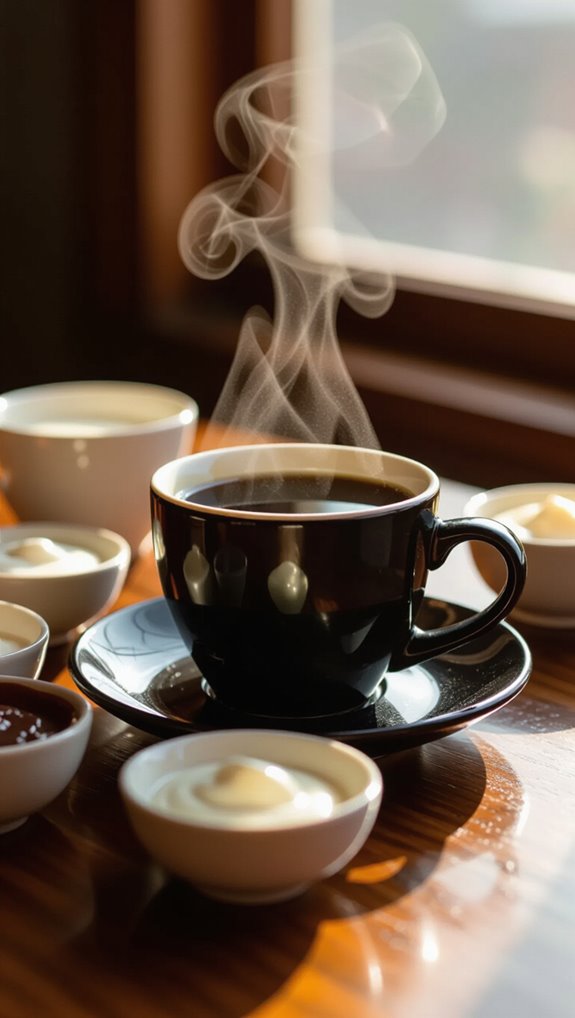
A dramatic carb spike can sneak into your daily coffee through milk, transforming an otherwise low-carb beverage into a surprising sugar bomb. Black coffee starts at zero carbs, but adding milk quickly changes the game.
A simple 2-tablespoon splash of cow’s milk introduces 1-2 grams of carbohydrates, while a 16-oz latte can pack around 14 g of carbs. Savvy low-carb coffee drinkers opt for unsweetened almond milk, which contributes less than 0.5 g carbs per splash. Heavy cream and half-and-half offer even fewer carbs, making them smart alternatives for those watching their intake.
Low-Carb Coffee Options for Keto and Diet Plans
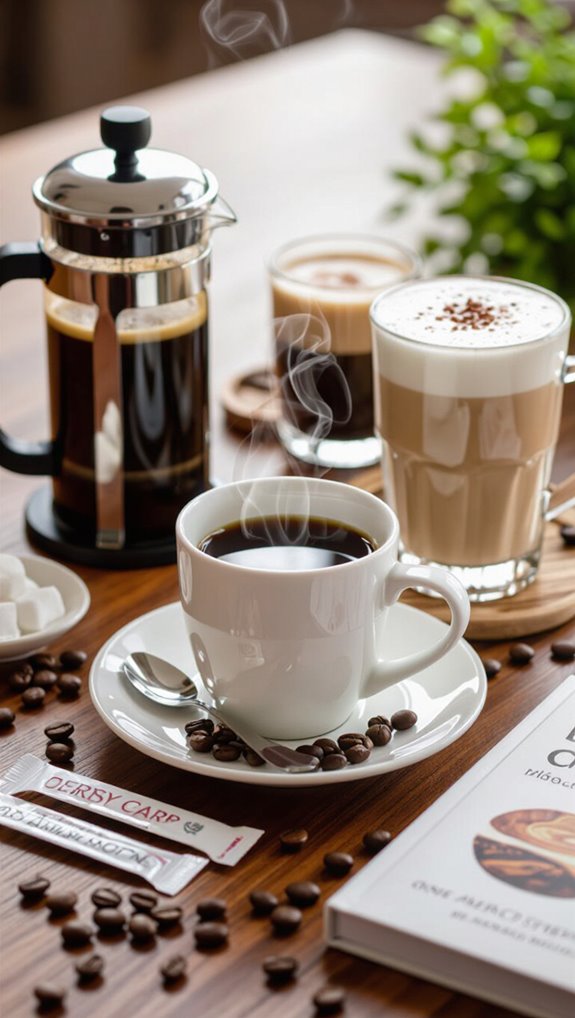
How can coffee lovers stay true to their low-carb or keto diet without sacrificing their daily brew? Black coffee and espresso are your best friends, clocking in at nearly zero carbs. Upgrade your keto coffee with unsweetened almond milk or a splash of heavy cream. Add MCT oil or collagen powder for extra nutrition without carb guilt. Skip lactose milk and sugary syrups; opt for sugar-free alternatives that keep your low-carb drinks on track.
Handy hint: Cold brew with a touch of unsweetened nut milk can be a delicious, carb-conscious morning ritual that won’t derail your diet goals.
Carbs in Iced Coffee vs Hot Coffee Drinks
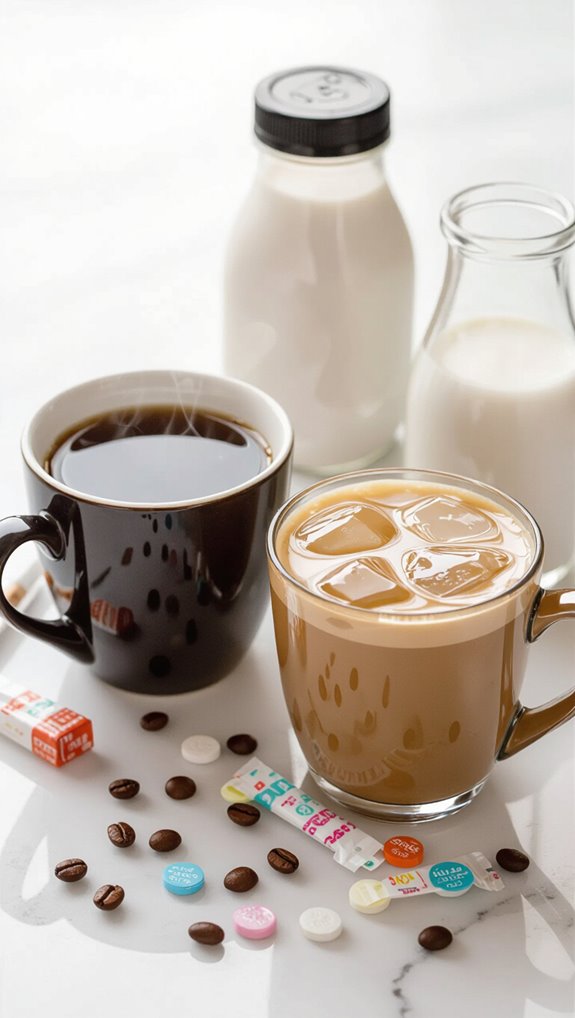
When it comes to carb content, iced and hot coffee drinks aren’t created equal, and grasping their nutritional differences can help you make smarter beverage choices.
Black coffee, whether hot or iced, typically contains negligible carbs. However, cold brew can sneak in slightly more—up to 4g per serving—due to extended extraction.
Specialty drinks like iced lattes and Americanos can quickly become carb traps when milk, flavored syrups, and sweeteners enter the picture.
The solution? Opt for unsweetened almond milk, sugar-free syrup, and skip the extras. By making strategic swaps, you’ll keep those hidden carbs at bay while still enjoying your favorite coffee.
How to Make Your Morning Coffee Lower in Carbs

If you want a low-carb morning coffee, focus on choosing the right ingredients, using minimal equipment, and following simple preparation steps. I’ll show you how to transform your regular coffee into a keto-friendly beverage by making strategic swaps that keep carbohydrates to a minimum.
Ingredients
Craft a low-carb morning coffee by strategically selecting ingredients that won’t spike your blood sugar or derail your dietary goals. Start with black coffee as your base—it’s naturally carb-free.
Swap regular milk for unsweetened almond, macadamia, or coconut milk, which add minimal carbs. When you’re craving creaminess, reach for heavy cream or half-and-half in small amounts.
Sweeten smartly with sugar-free syrups or natural zero-carb options like stevia and monk fruit. Avoid traditional flavored syrups that can quickly turn your low-carb brew into a carb-loaded treat.
Equipment
After carefully selecting low-carb ingredients, the right equipment can make or break your morning coffee’s carb count. The perfect coffee setup minimizes unnecessary carbs while maximizing flavor:
- Use a drip brewer, French press, or espresso machine
- Keep a kitchen scale or measuring scoop nearby
- Invest in a coffee station with sugar-free sweeteners
- Choose precise brewing tools for controlled portions
- Experiment with cold brew concentrate for bold, low-carb flavor
Precise brewing equipment helps you track every ingredient’s carb contribution. By measuring coffee grounds carefully and using tools like a kitchen scale, you’ll create deliciously low-carb espresso shots and brews that satisfy without spiking your carbohydrate intake.
Instructions
When you’re watching your carb intake, transforming your morning coffee into a low-carb delight is easier than you might think. Choose black coffee or an Americano for minimal carbs, then customize with unsweetened options.
| Coffee Base | Low-Carb Milk | Sweetener |
|---|---|---|
| Americano | Almond Milk | Stevia |
| Black Coffee | Heavy Cream | Monk Fruit |
| Keto Coffee | No Milk | Zero-Calorie |
At home, elevate your keto coffee by adding MCT oil or grass-fed butter. Skip sugary syrups and opt for unsweetened, zero-carb alternatives. A splash of heavy cream or unsweetened almond milk keeps things creamy without carb overload. Your low-carb morning brew is just moments away!
Frequently Asked Questions
Can I Drink Coffee While on a Low-Carb Diet?
Plain coffee’s carb-free, so I can enjoy my brew without worry. I’ll just skip sugary add-ins and use low-carb options like unsweetened almond milk or stevia to keep my drink diet-friendly.
How Many Carbs to Stay Under for a Low-Carb Diet?
I aim to keep my daily carbs under 130 grams for a standard low-carb diet, or between 20-50 grams if I’m pursuing ketosis. It’s crucial to track each ingredient and choose low-carb alternatives to stay within my target.
What Is the Best Low-Carb Coffee Option?
Plain black coffee is your best low-carb choice. I recommend hot-brewed coffee with zero additives, which contains less than 1 gram of carbs. If you need variety, try an americano or add a tiny splash of unsweetened almond milk.
Does Coffee Count as Carbs?
No, plain black coffee doesn’t count as carbs. I’ll tell you straight: an espresso or brewed coffee has less than 1 gram of carbohydrates. It’s the added milk, syrups, and sugars that’ll spike your carb intake.
In Conclusion
The truth is, understanding how many carbs are in coffee empowers you to make smarter choices that align with your low-carb lifestyle. Your daily cup doesn’t have to derail your dietary goals—by choosing black coffee or Americano and skipping sugary additions, you’ll keep carbs minimal. Opt for unsweetened alternatives like almond milk or a splash of heavy cream, and use sugar-free sweeteners if needed.
With these simple swaps, you can enjoy your caffeine fix while staying on track. The key is having the right equipment at home to brew quality coffee that tastes great without unnecessary add-ins. Check out our coffee machine reviews to explore smart, well-reviewed options that make it easy to prepare delicious low-carb coffee exactly the way you want it, every single day.

